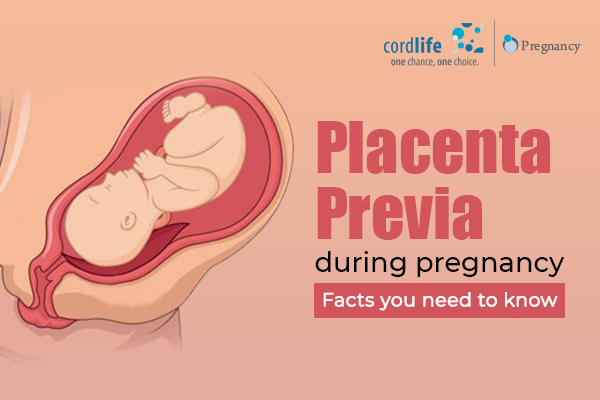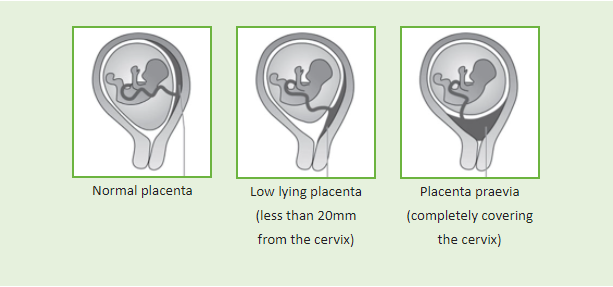Table of Contents
- What Is Placenta Previa?
- What Are The Different Types Of Placenta Previa?
- When Is The Placenta In A Low Lying Position During Pregnancy?
- What Are The Possible Causes and Risk Factors Of Placenta Previa?
- What Are The Warning Signs or Symptoms of Placenta Previa?
- Is Placenta Previa Painful?
- How To Treat Placenta Previa?
- Medical Treatment Methods For Placenta Previa During Pregnancy
- Natural Treatment Methods For Placenta Previa During Pregnancy
The placenta, the sac-like organ nourishes the baby inside you with the much-needed oxygen and nutrients through the umbilical cord blood, removes waste material, and provides a safe environment for the baby’s healthy growth and development inside you. It also keeps the baby in you in the correct position.
Normally, the placenta attaches to the top, side, front, or back of the uterine wall and the baby’s umbilical cord starts developing from there, during your pregnancy. However, placental complications like Placenta Accreta, Abruption, Placenta Previa, Placentitis, and Retained Placenta are not uncommon occurrences.
Read this informative article to understand everything about placenta previa during pregnancy:
What Is Placenta Previa?
Basically, in the condition of placenta previa, the placenta, which helps in foetal development, might attach to the lower part of the uterus, covering the cervix either partially or fully. This condition is common in 1 in 200 pregnancies.
What Are The Different Types Of Placenta Previa?
The type and severity of placenta previa might depend entirely on how the placenta might be covering the cervical area. So, the types are as follows:
| Complete Placenta Previa | In this condition, there are chances that the placenta might be fully covering the cervix. |
| Partial Placenta Previa | In this condition, the placenta seems to be bordering the cervix. |
| Marginal Placenta Previa | In this type of placenta previa, the edge of the placenta is implanted very close to the cervix, but the cervix is not covered completely. |
When Is The Placenta In A Low Lying Position During Pregnancy?
Research has shown that 10% of you, during the first 20 weeks of your pregnancy might experience this condition. However, your healthcare provider would constantly monitor you, as there might be a 5% chance of your suffering from this condition by the time you reach the end of your pregnancy.
What Are The Possible Causes and Risk Factors Of Placenta Previa?
In fact, you might be at the risk of placenta previa during pregnancy if:
- You have had low implantation during your first trimester
- If your baby is in an unusual position in your womb – like breech position
- If you had previous surgeries including. For instance:
- Emergency C-section
- removal of uterine fibroids
- Dilation and curettage (D&C)
- If you have been previously pregnant with twins or more babies
- If you have a large placenta
- If you have an abnormally shaped uterus
- If you are addicted to smoking and
- If you are pregnant and more than 35 years old
What Are The Warning Signs or Symptoms of Placenta Previa?
As a result of placenta previa these are the signs you might be experiencing:
- Light to heavy vaginal bleeding the most noteworthy placenta previa symptoms.
- Cramps or sharp pains
- Thinning of the cervix and
- Cervical dilation tends to tears the placenta resulting in placenta previa bleeding.
Is Placenta Previa Painful?
Pain is mild to severe when you’re suffering from placenta previa. However, some of you may feel the pain with uterine contractions, by the end of your pregnancy.
How To Treat Placenta Previa?
Well! Unchecked placenta previa might give rise to birth defects in babies like low birth weight and cerebral palsy. Moreover, too much blood loss means Iron deficiency in your body. This further means lower haemoglobin levels or anaemia during your pregnancy.
Therefore, both medical and natural treatments are applied. The overall, goal of medical and natural treatment methods is to ease the bleeding and reduce pregnancy complications.
Medical Treatment Methods For Placenta Previa During Pregnancy
In this condition:
- Your hospitalization would become a necessary step. After all, careful monitoring of your signs, checking the foetal heartbeat, and keeping a regular check on your health are required.
- Alternately, due to blood loss, you might be suggested a blood transfusion.
- You might be suggested with pre-term delivery.
Natural Treatment Methods For Placenta Previa During Pregnancy
Additionally, in this condition:
- intake of iron, folate-rich food, and foods rich in vitamin C, would be needed. Along with this, iron supplements in consultation with the doctor can help.
- You might also be asked to take bed rest till such time that you have delivered your baby.
- You’d also be advised to avoid any activity that would trigger uterine contractions.
Also, remember that pregnancy is one of the beautiful phases in your life. Don’t let pregnancy complications like placenta previa mar this wonderful experience of your life and look forward to our blog page, to know everything about pregnancy, childbirth, postpartum, parenting, and cord blood banking.

